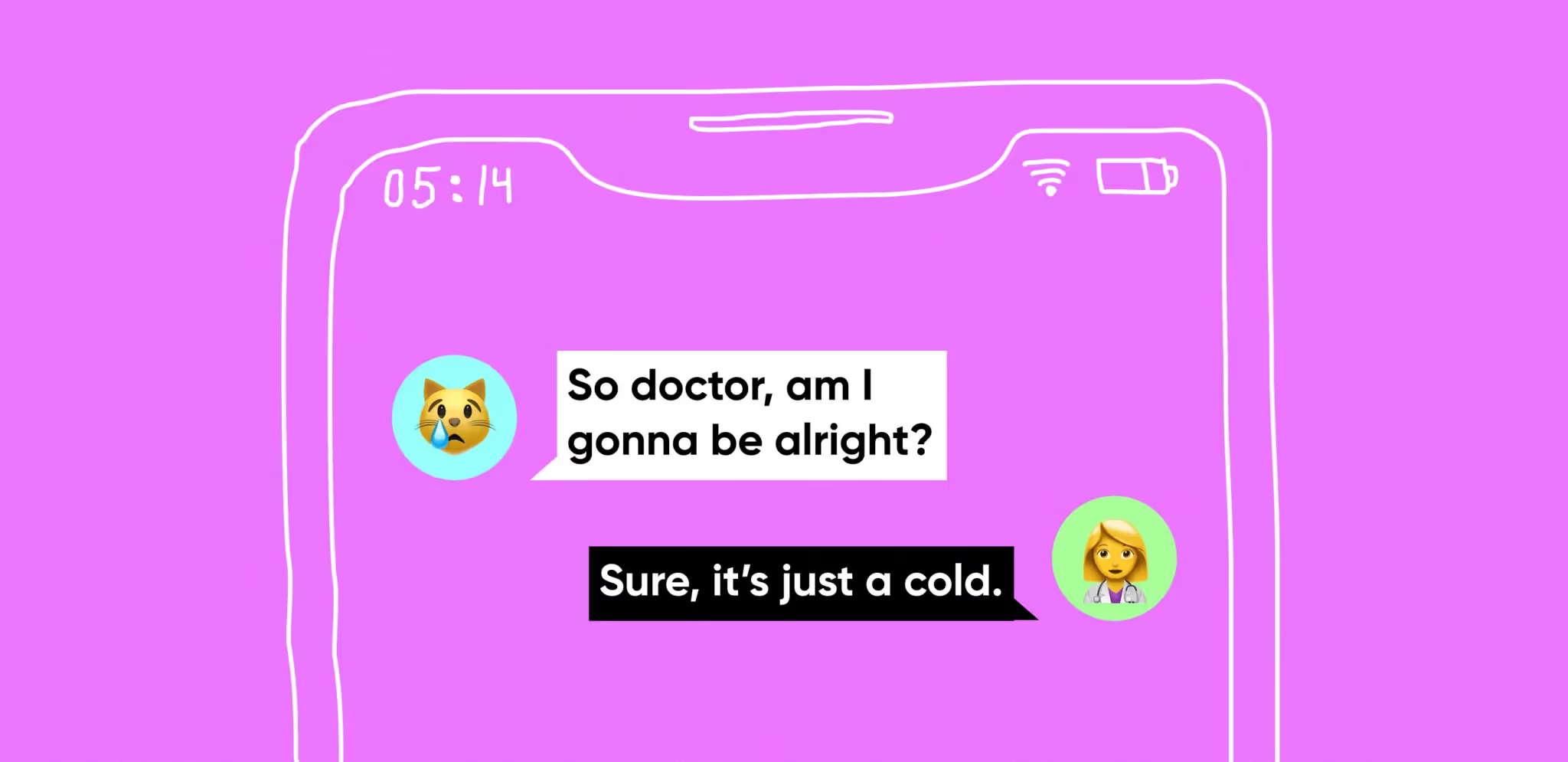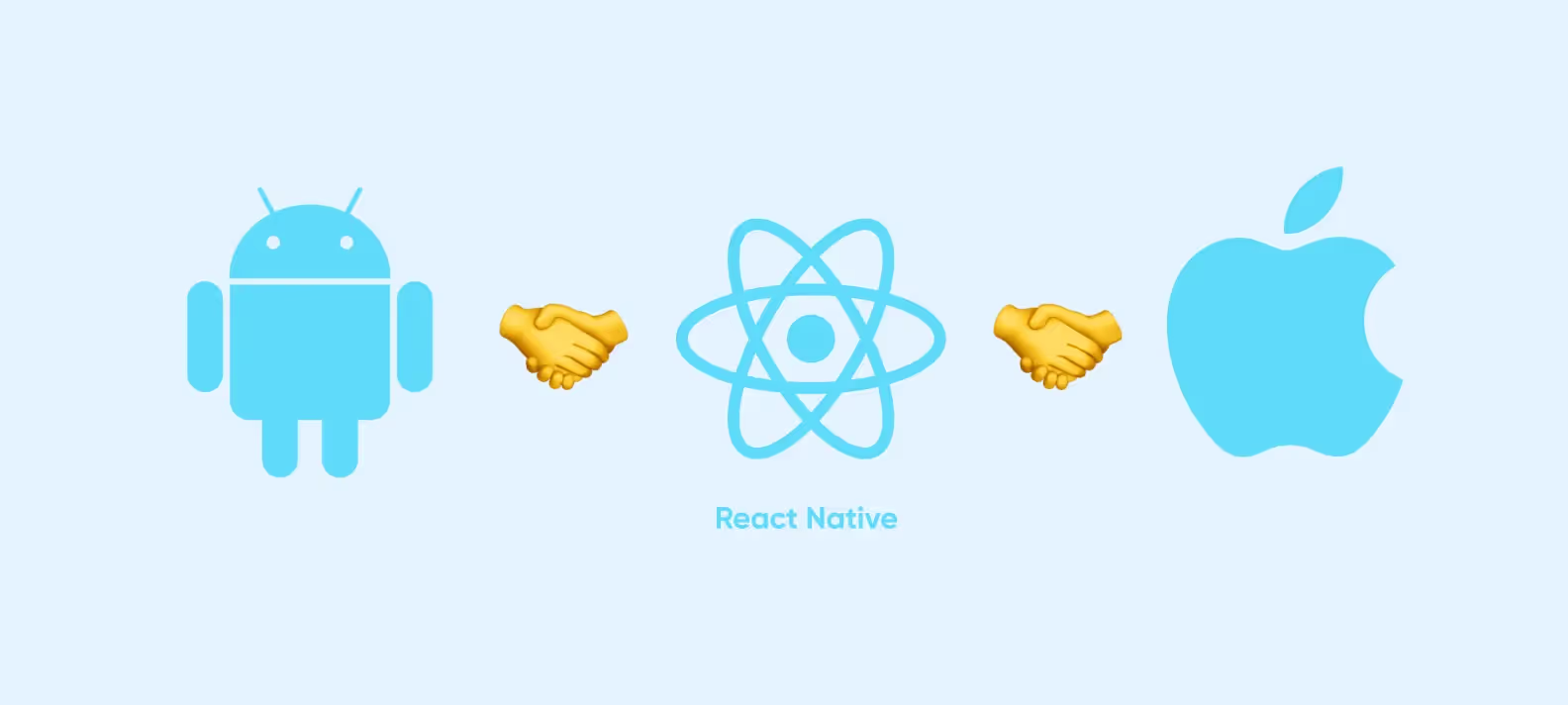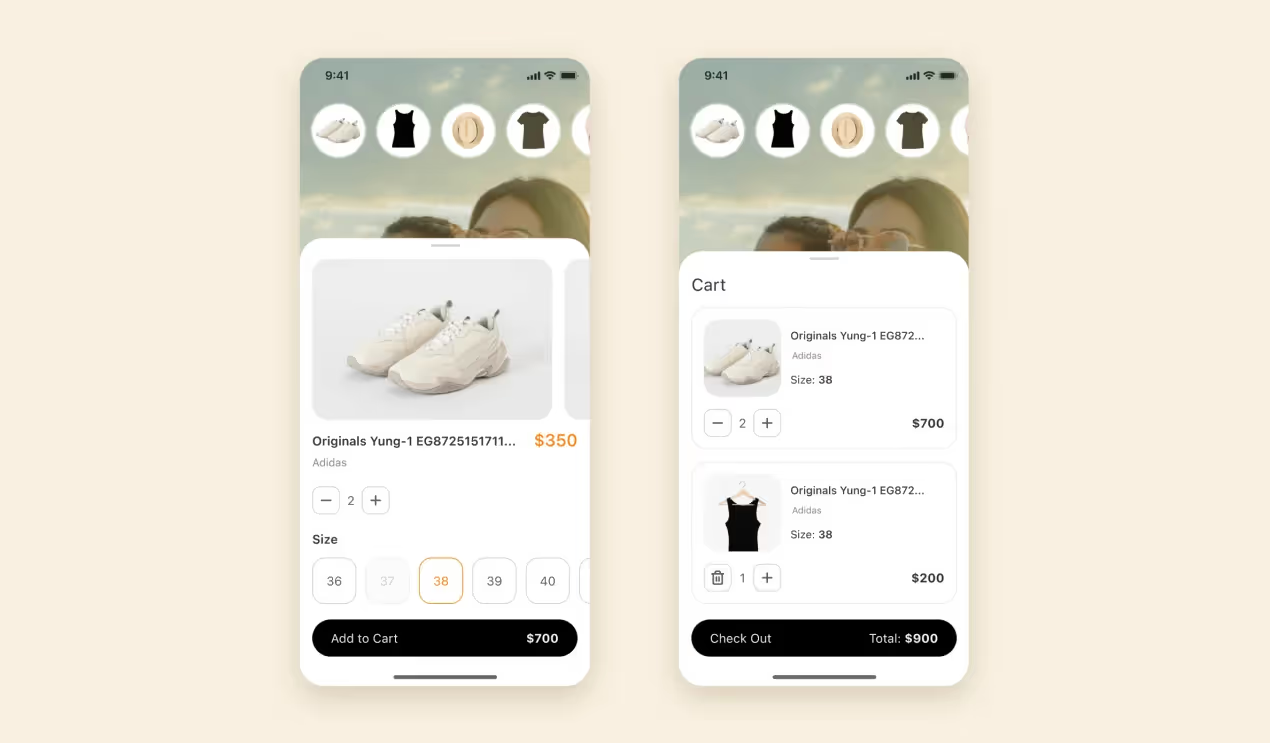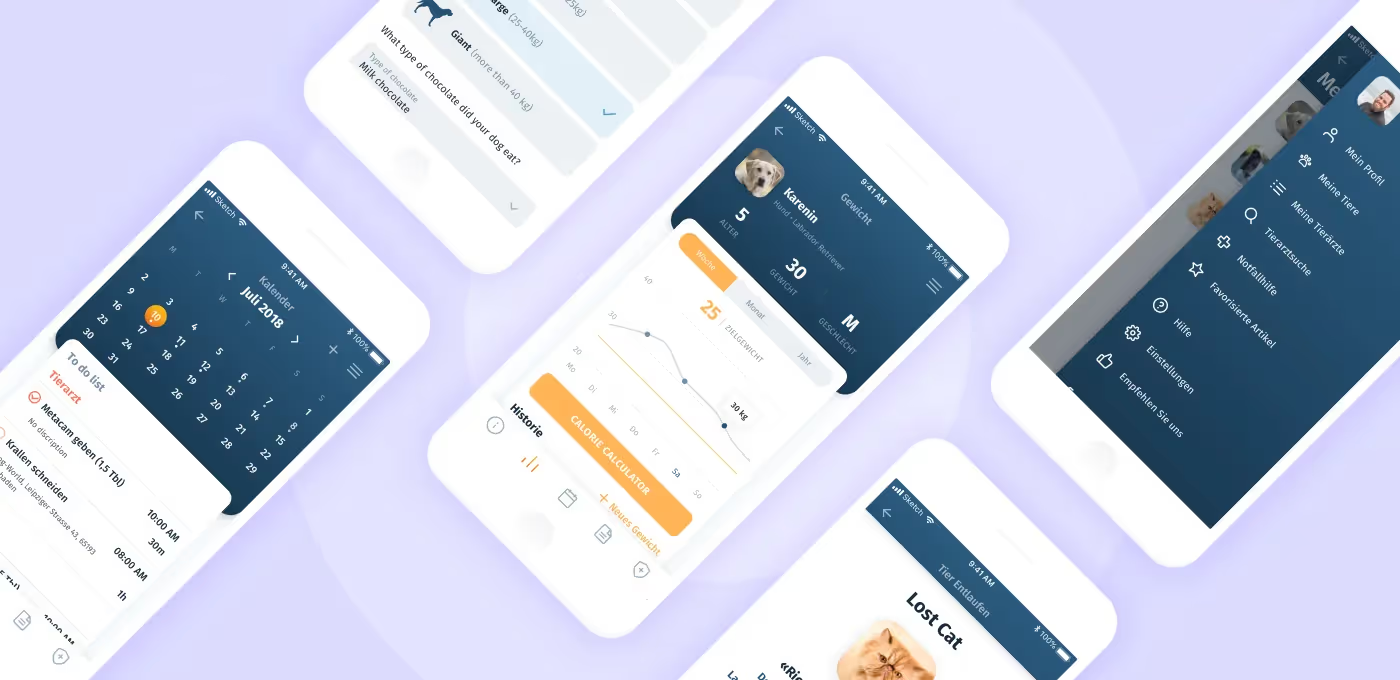


Telemedicine is here to stay, and this is true not only for us but for our adorable little friends, too. Every pet parent knows how stressful it is for animals to visit vet facilities (and, frankly, for everyone involved), so online consultations can be a great way to make life a bit easier for both pets and humans. And on top of this, the newly born vet software market welcomes fresh players with open arms.
Sounds good? Let’s dive into it.

We’ll get straight to the point — 2025 is the perfect year to launch a veterinary mobile app. Here’s why.
On-demand vet software is still an emerging niche, so the market offers huge opportunities for early comers as well as plenty of room for creative solutions and innovative products. No clearly established major players are dominating the pet care market, but the competition is steadily growing due to the increased preference for telemedicine in the aftermath of the pandemic.
And now, let’s talk about the money involved. In 2021, Europeans spent $20.3 billion on pet food and services( FEDIAF), while Americans spent $34.3 billion on vet care & products ( APPA). And in 2022, the veterinary software market size was measured at $538.1 million. This figure is expected to double by 2030, reaching $1,07 billion ( Grand View Research).
.avif)
Apart from this, a successful service can count on stable demand that’s here to stay for a long time. Approximately 4.1 million pets are adopted from animal shelters each year in the US alone ( ASPCA) while 46% of European families live with at least one pet in the household ( FEDIAF). Each of these animals needs regular vet care over the entire course of their lives, so there are millions of potential customers interested in long-term cooperation.
There are two types of veterinary mobile apps: client-centered and business-centered. Each offers a drastically different set of features.
Client-centered apps, as the name suggests, cater to the needs of animal parents. They serve as a point of contact between pet owners and the world of veterinary care. At the core of such apps lie various telemedical features, for instance, chat rooms and video conferences.
In addition to this, client-centered software often supplements brick-and-mortar vet centers and offers customers the opportunity to schedule in-person appointments via the Internet. Sometimes, the list of functions also includes an integration with vet pharmacies and online stores.
Business-centered apps are tools that help streamline the business processes of veterinary clinics. This type of software often comes in the form of customer relationship management (CRM) systems that sort, analyze, and prioritize sales leads to boost conversion and enhance loyalty.
But it’s not the only thing they can do. There are business-centered apps that assist in operations & inventory management, make it easier to store and manage health records, or generate reports and analytics. Finally, some veterinary mobile apps provide vets with extensive knowledge bases regarding various medical conditions and medicines.
Both of these segments are full to the brim with opportunities, but in this article, we’ll focus solely on client-centered veterinary mobile apps. The reason is simple: each topic is so extensive and different from one another that cramming them into one text would be a mistake.
Although the market is still young, there already are successful players that have been around for some time. They can provide us with positive references as well as serve as good examples of the key features we’ll be talking about later.
Airvet is a telehealth app that connects its customers with a network of thousands of licensed veterinarians 24/7. There are two ways to communicate with a doctor: you can use an online chat or start a video call. The chat is most suitable for non-urgent questions regarding general care, diet, and behavior while video conferences are reserved for more in-depth consultations.
When the customer starts a video call, the system connects them with the first available veterinarian and automatically opens a case. To connect with a doctor, you need to pay a fixed fee. This case will then stay open for the next 72 hours. During this time, the customer can have a follow-up conversation with the same specialist free of charge.
All health-specific information about their animals is stored in pets’ profiles.
.avif)
Modern Animal is a mobile veterinary app that runs alongside an eponymous network of brick-and-mortar vet clinics in Los Angeles and the San Francisco Bay Area. The whole system operates based on annual subscriptions: once you’ve purchased yours, you get access to 24/7 on-demand video consultations and free-of-charge appointments at any of the network’s locations. One subscription covers only one pet.
The app allows customers to connect with licensed veterinarians via video calls as well as book and manage in-person appointments. In case the pet needs some additional care like dental cleaning or nail trimming, there’s a separate screen where customers can get an estimate on the price of these services.
Finally, all prescriptions, care recommendations, and diagnostic summaries are stored in the pet’s profile and can be easily accessed at any time.
.avif)
PetDesk can be best described as a pet care management system. Instead of offering telemedical services of an in-house vet team, it provides a multifunctional platform for users to connect with their primary pet care providers and keep track of all the important information about their beloved animals.
Customers can create custom to-do lists, set various reminders as well as conveniently store lab results, prescriptions, vaccinations, and general recommendations in one place.
If your vet or grooming facility uses PetDesk, the app allows you to easily get in touch with them, schedule appointments, and even refill prescriptions.
.avif)
And now, back to telemedicine. Joii Pet Care connects customers with qualified members of the British Royal College of Veterinary Surgeons via video calls. Before the appointment starts, you can upload any pictures you would like your vet to see. Afterwards, the app stores the full treatment plan together with the diagnosis and clinical advice.
The app’s unique selling point, however, is the symptom checker — a free interactive service that outlines a recommended course of action based on the symptoms that the customer has listed.
.avif)
On-demand mobile veterinary apps share seven core features, and implementing them is crucial if you want to create a smooth and seamless user journey.
Thankfully, not every case in vet practice is related to diseases. Sometimes, all that customers need is to ask a couple of questions about nutrition, behavior, or medications to simply give their pets the best they can or to see if they have anything to worry about. ͢
Chats are perfect for minor issues and non-urgent questions, but when the customer needs an in-depth consultation, video calls are a much better choice. During a video call, the vet can have a closer look at the animal via the phone camera and ask the pet parent to perform certain instructions.
.avif)
If your business also provides in-person consultations at vet facilities, appointment scheduling is a must. Today’s customers are used to booking everything online, and younger generations even regard phone calls as a relic of the past. Keep the process as simple as possible. All in all, it should take no more than three steps: location → specialist → time.
To make the user experience even smoother, you can integrate your vet on-demand app with calendars and various time-planning software.
Keep the checkout simple and intuitive — it shows respect for your clients’ time, and that has a positive impact on loyalty and conversion rates. As a quality-of-life improvement, you can also provide multiple payment options: for example, accept transfers not only from bank cards but also from electronic wallets like Apple Pay or PayPal.
It’s much more convenient for both customers and veterinarians if the information about a particular pet is stored in one place. Virtually all mobile veterinary apps come with pet profiles: easily customizable repositories where the user can specify their animal’s name, age, breed, weight, ID, existing health conditions, food preferences, and other bits of data that can be useful during the examination.
Many customers have more than one pet, so a single account should support multiple pet profiles.
.avif)
The most obvious way of using push notifications is to remind customers about upcoming appointments and promote special offers, but their range of applications is actually much broader than that. They can be a handy tool when it comes to pet care activities. For example, customers can ask the mobile app for veterinary care to alert them when it’s time for feeding, going for a walk, or playing. However, nobody likes getting unwanted notifications, so make sure that there’s always an option to turn them off.
With a GPS integration, your customers will be able to quickly find the nearest clinic. It’s critically important in case of an emergency and simply convenient in all other situations where the pet requires an in-person examination.
.avif)
In addition to the seven core features we’ve just discussed, you can implement several additional ones that will make the user experience even smoother and help you gain a competitive advantage.
Vet businesses thrive on lasting relationships with customers. It’s impossible to build them without great service and qualified specialists, but once you’ve got these basics down, there are a couple of other things you can do to increase retention.
One of them is implementing a loyalty system with various rewards that encourage pet owners to use your services. Gamification can be a bit inappropriate in this case, but offering cashback is a perfectly viable option.
OK, so the vet has finished the examination, prescribed medication to Fluffy, and recommended the dog to have more physical activity during the day. Instead of sending the customer to third-party pharmacies, you can offer to buy that medication and some toys right in the app.
The easiest way to do this is to partner up with some pet pharmacies so that you have to deal with fewer legal concerns, but you can always opt to open your own store.
.avif)
To give your vet on-demand app a more custom-tailored feel, implement an AI-backed algorithm that uses the data from pet profiles and the history of previous purchases to recommend customers relevant products and services. For example, if the user specified that they have a cat, they would get offers only on cat care products.
Finally, you can establish a database that contains useful tips regarding diets, drug administration, emergency care, symptoms, and other important veterinary issues. We’ve seen an example of this in Joii Pet Care.
Since vet care inherently belongs to the strictly regulated medical sphere, there are several important regulations you must consider when developing a veterinary app. This is true for any country, but in this article, we’ll talk exclusively about US laws.
FFDCA stands for the Federal Food, Drugs, and Cosmetic Act. This law establishes the definitions of over-the-counter (no prescription necessary) and prescription medications. If you want to sell veterinary drugs through the app, you must comply with the requirements.
To operate on the US market, a vet on-demand app must first get certified by the Food and Drug Administration, which has regulatory oversight of all medical software released in the country. In this article, you can find some examples of the functions that require the FDA review.
The American Veterinary Medical Association is a not-for-profit organization that represents more than 90,000 vet specialists across the US and lobbies for animal-friendly legislation. It has released a special set of guidelines that establish the basics of work ethics in the field. While not compulsory, compliance with these guidelines can boost the image of your product.
HIPAA is a set of administrative regulations aimed at safeguarding your human clients’ confidentiality. It requires that all healthcare providers (developers of pet care apps included) implement a number of measures (administrative, physical, and technical) to combat fraud, leakages, unauthorized access, and any other infringements that would compromise their customers’ sensitive information.
Each state has different policies regulating personal data protection and veterinary services, so make sure that you examine all of them carefully before launching your business. If in doubt, consult a lawyer — the ‘better safe than sorry’ principle is especially relevant when it comes to law.
We believe the best approach to bringing a new concept to life is to first create a minimum viable product (MVP). An MVP is a bare-bone version of an app designed to showcase its main functionality. It’s perfect for gauging the market, testing the viability of your idea, and raising some funds. And it helps reduce expenses, too.
In other words, it’s a perfect fit for any startup, and this is exactly what we start with here at Purrweb. Let’s break down the whole process into six steps.
Every business starts with market research. Before building a pet care app, get to know the field you’ll be working in: define what drives the demand, mark the key trends, and study your competitors extensively. Analyze rival products to establish their strengths and weaknesses, and use this information to better shape your concept.
Choose what functionality you want to implement. There are 3 equally important factors to consider: the results of the market analysis, your business model, and the specifics of your niche.
We’ve already mentioned the standard set of features, but you can always innovate and come up with new approaches. To make your future veterinary application stand out, choose a killer feature, a.k.a. a unique selling point — the one thing that eclipses the products of your competitors.
This is when the app finally begins to take shape. The first thing you need is a straightforward customer journey that will gently guide users through the sales funnel. Once you’ve outlined the general flow of the vet on-demand app, it’s time to start making things pretty.
Exercise caution with the design, it should be attractive but not overwhelming. In business, function comes before aesthetics. A team of qualified designers will take all these considerations into account, so you might consider delegating this task.
Make sure to employ a development team that consists only of skilled professionals in full command of their craft — there’s nothing that users hate more than bugs, painfully long loading times and other symptoms of clumsy coding.
To make your vet on-demand app available for as wide an audience as possible, stick with cross-platform development and roll out versions for both Android and iOS at the same time.
Be sure to conduct testing before releasing the app.

No service can survive in a vacuum. When your customers want to suggest something, give them the opportunity to do so. However, it’s important to carefully filter incoming messages — some will inevitably be useless, and trying to satisfy every single complaint is counterproductive. Instead, focus on noticing the most important trends.
The on-demand app development process doesn’t really stop until the app shuts down — as long as there is demand for the service, there’ll always be some room for improvement. Add other features from the backlog, scale, and simply bring your app to perfection, all the while maintaining proper communication channels with your target audience.
All things considered, developing a pet care app may cost anywhere from $55,000 to $60,000. The final cost depends on multiple parameters:
Mobile applications generally fall into one of the following categories: simple, medium, and complex. Simple apps utilize a relatively small number of features and don’t employ any new technologies, while complex software usually has many original features that make use of freshly developed tech.
The more complex your final design, the higher the price. If you want to spare some resources, you can go with a minimalistic layout that explicitly focuses on function rather than prettiness. Alternatively, you can add some custom illustrations and animated elements, but this will cost more.

Smaller teams are less expensive to hire, but big teams implement projects much faster, which can be vital in some situations.
There are 3 options available: in-house, freelance, and outsourced. It costs more to maintain in-house teams, but they’re more reliable. Contracting freelance or outsourced teams, on the other hand, can be helpful when you can’t afford to spend money on workplace perks.
Geography alone can cut your expenses in half — or raise them threefold. Teams based in the US, Canada, and Western Europe boast higher wages, while the countries of Latin America and most of Asia offer much cheaper workforce.
Ideally, an app should run on both iOS and Android — this way, you’ll get a much wider audience. However, this basically means developing two separate applications which results in a bigger check. To cut some costs, you can use cross-platform frameworks like React Native or Flutter — this is the way we approach this task at Purrweb.
A couple of years back, an owner of a vet clinic in Germany reached out to us with an idea for a pet health tracker app. The client had two goals in mind: creating a tool that would allow animal parents to monitor the important health indicators of their pets and improving the LTV (lifetime value) of the clinic’s existing customers.
Sometimes, clients come to us only with abstract ideas or rough sketches, and it’s perfectly fine. In the case of PetBuddy, the product owner didn’t know exactly what screens and features she wanted to implement, so we brainstormed together and came up with several neat functions: a weight tracker, an event calendar, a chocolate calculator (because chocolate can be lethal for dogs), the option to report a missing pet, and a GPS-based service to find the nearest hospital.
After 3 months, the app was already up and running on both Android and iOS, and by now, it has amassed more than 5,000 downloads.

➡️ Do you have an idea for a veterinary service? Purrweb would love to help you bring it to life. Our team will take your project through every stage of the development process. Reach out to us <a class="blog-modal_opener">using the form</a> — we’ll turn your concept into an MVP perfect for gauging the market, and gradually scale the project.